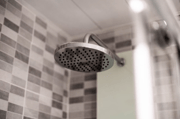Unlocking better health from home: What to know about at-home tests
By
Veronica E.
- Replies 1
Disclaimer: The information provided in this article is for educational purposes only and is not intended as a substitute for professional medical advice, diagnosis, or treatment. Always consult your physician or other qualified healthcare providers with any questions you may have regarding a medical condition or before making any changes to your health regimen.
The doctor may not be making house calls anymore—but your test results can.
From cholesterol and thyroid checks to the newly approved at-home cervical cancer screening, self-testing kits are more available than ever.
If you’ve noticed these on store shelves or online and wondered, “Are they worth it?” you’re not alone.
At The GrayVine, we believe in making health care easier to navigate.
So, here’s what you need to know about the most common at-home tests, how they work, and when it’s still best to visit your doctor.

Today’s at-home health kits go way beyond thermometers and blood pressure monitors.
Depending on your needs, you can now screen for:
Most tests fall into two categories:
For many older adults, at-home tests are convenient and stress-reducing. You might consider one if:
At-home HIV tests, for example, have helped increase diagnoses in underserved areas.
And the FDA recently approved the first at-home cervical cancer test, offering more privacy and access for routine screening.
Not quite.
At-home kits are great for screening—but not for diagnosing or managing complex issues.
Doctors say if you have a family history of certain conditions, new symptoms (like unexplained weight loss or bleeding), or need a full physical exam, it’s best to skip the kit and go straight to the clinic.
Plus, even with a good test, it’s important to have a professional interpret your results.
Something that looks “off” might not actually be serious—or it could be more urgent than the test suggests.
Prices vary depending on the type.
A simple blood sugar test may cost around $15, while full panels (like food sensitivities or hormone levels) can run up to $400.
Insurance may cover some tests, especially if your doctor recommends them—so it’s worth checking before buying.
Choose an in-person doctor visit if:
At-home tests can be helpful tools—especially for routine checkups, managing known conditions, or when travel and mobility are a challenge.
Just remember: they’re a supplement, not a substitute.
Partner with your doctor, keep communication open, and don’t be afraid to ask questions!
Read next: Experts reveal: Ignore these 6 home maintenance tasks and you’ll regret it!

Have you tried an at-home test recently? Did it give you peace of mind—or raise more questions? Share your experiences, tips, and thoughts in the comments. You might help someone else feel more confident about taking charge of their health!
The doctor may not be making house calls anymore—but your test results can.
From cholesterol and thyroid checks to the newly approved at-home cervical cancer screening, self-testing kits are more available than ever.
If you’ve noticed these on store shelves or online and wondered, “Are they worth it?” you’re not alone.
At The GrayVine, we believe in making health care easier to navigate.
So, here’s what you need to know about the most common at-home tests, how they work, and when it’s still best to visit your doctor.

A growing number of at-home health test kits now let you screen for key conditions without leaving your house—offering both convenience and peace of mind. Image Source: Pexels / Tima Miroshnichenko.
What kinds of tests can you do at home?
Today’s at-home health kits go way beyond thermometers and blood pressure monitors.
Depending on your needs, you can now screen for:
- COVID-19 and flu
- Blood sugar (glucose)
- Cholesterol and heart health
- Colon cancer (FIT and Cologuard)
- Thyroid function
- Sexually transmitted infections (STIs), including HIV
- Cervical cancer (HPV)
Most tests fall into two categories:
- Lab-processed: You collect a sample (blood, saliva, urine, or a swab) and mail it in. Results are sent back via email, text, or an online portal.
- Instant results: These are similar to over-the-counter COVID or pregnancy tests and give you answers within minutes.
Also read: Save your life in 5 minutes? Try this simple at-home test a leading cardiologist swears by!
Why more people are trying them
For many older adults, at-home tests are convenient and stress-reducing. You might consider one if:
- You live in a rural area far from clinics.
- You’re managing a chronic condition like diabetes or high cholesterol.
- You want privacy, especially for sensitive topics.
- You have trouble getting to appointments.
At-home HIV tests, for example, have helped increase diagnoses in underserved areas.
And the FDA recently approved the first at-home cervical cancer test, offering more privacy and access for routine screening.
Also read: Unlock the secret early detector of Alzheimer’s: This simple DIY test could reveal clues in advance!
But are they just as good as a doctor visit?
Not quite.
At-home kits are great for screening—but not for diagnosing or managing complex issues.
Doctors say if you have a family history of certain conditions, new symptoms (like unexplained weight loss or bleeding), or need a full physical exam, it’s best to skip the kit and go straight to the clinic.
Plus, even with a good test, it’s important to have a professional interpret your results.
Something that looks “off” might not actually be serious—or it could be more urgent than the test suggests.
Tips for choosing the right kit
- Look for FDA approval (or TGA in Australia). That’s your best bet for accuracy.
- Know your risk factors. If you have a history of illness, talk to your doctor before relying on at-home testing.
- Don’t self-diagnose. Use these tools for routine monitoring or screening only.
- Always follow up. Share your results with your healthcare provider—especially if anything seems unusual.
Also read: This 5-second household test could prevent a shocking disaster—here’s how to do it now
What do they cost?
Prices vary depending on the type.
A simple blood sugar test may cost around $15, while full panels (like food sensitivities or hormone levels) can run up to $400.
Insurance may cover some tests, especially if your doctor recommends them—so it’s worth checking before buying.
When to skip the at-home test
Choose an in-person doctor visit if:
- You have new or worsening symptoms.
- You’re at high risk for a condition.
- You’re unsure how to interpret your results.
- You’re due for a full physical exam.
At-home tests can be helpful tools—especially for routine checkups, managing known conditions, or when travel and mobility are a challenge.
Just remember: they’re a supplement, not a substitute.
Partner with your doctor, keep communication open, and don’t be afraid to ask questions!
Read next: Experts reveal: Ignore these 6 home maintenance tasks and you’ll regret it!
Key Takeaways
- At-home test kits now screen for everything from cholesterol and thyroid levels to cervical cancer and colon health.
- They’re convenient for older adults with mobility challenges or those living in remote areas.
- Doctors caution that these tests are helpful for screening but can’t replace full exams or personalized care.
- Always choose FDA-approved tests and talk to your doctor about any results, especially if you have symptoms or a family history of illness.
Have you tried an at-home test recently? Did it give you peace of mind—or raise more questions? Share your experiences, tips, and thoughts in the comments. You might help someone else feel more confident about taking charge of their health!






